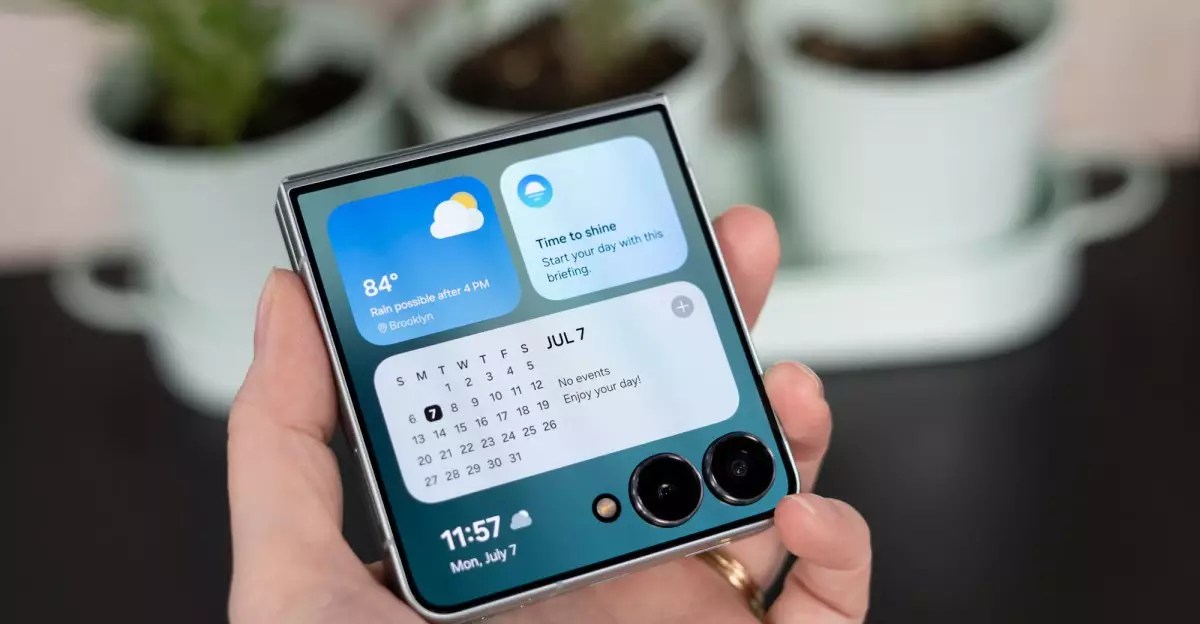In recent years, the smartphone industry has been captivated by a desire to push technology beyond the conventional slab. Foldable phones emerged as the bold realization of this ambition, promising a future where devices adapt dynamically to our needs — from compact pockets to expansive screens. Yet, despite their promise, foldables face an inherent challenge that threatens to undermine their breakthrough potential: vulnerability to dust and debris. While traditional smartphones boast durability through high IP ratings, foldables still struggle with sealing in finer particles, risking damage and shortening their lifespan. This pervasive issue raises fundamental questions about whether truly dust-proof foldable designs are achievable and, if so, how close we are to that reality.
The Evolution of Foldable Technologies and Persistent Flaws
Initial attempts at foldable phones, such as Samsung’s early Galaxy Fold models, suffered from significant durability flaws. Reviewers experienced creases, screen failures, and peels—problems that could be traced back to inadequate sealing and materials incapable of withstanding everyday dirt and dust. These issues are not merely cosmetic; dust particles entering through tiny gaps can compromise the hinge, jeopardize display integrity, and ultimately lead to device failure. Manufacturers have made substantial strides: adding water-resistance ratings like IP54 and IP58, upgrading hinge design, and adopting stronger glass and protective layers. However, the critical vulnerability—dust ingress—remains a thorn in the side of foldable innovation.
What becomes clear is that current IP ratings, while improving splash and water resistance, do little to address the microscopic threats posed by dust particles. An IP68 rating, which offers total sealing against dust and immersion, remains elusive for most foldables. This is not merely an oversight but a technical difficulty rooted in the very design philosophy of foldable devices, where hinges and flexible screens create complex sealing challenges. The microscopic nature of dust particles—smaller than a millimeter— makes complete protection nearly impossible without sacrificing design considerations like aesthetics, weight, or foldability.
The Industry’s Ambiguous Promise of Dust Resistance
Leading manufacturers like Samsung and Motorola have publicly expressed cautious optimism about achieving dustproof foldables. Statements from Samsung’s top executives acknowledge the difficulty of this goal. The core issue is engineering: how to develop foldable devices that maintain their flexibility and sleek form while ensuring zero susceptibility to microscopic particles. Manufactured prototypes with higher IP ratings often face trade-offs. Increased sealing can lead to rigidity, compromise hinge longevity, or add weight—factors that diminish user experience and raise costs.
Rumors circulate about upcoming models—such as Google’s Pixel 10 Pro—clinging to hopes of dust resistance that would elevate foldables into the same league as rugged slab phones. If realized, these advancements could finally bridge the gap between conceptual promise and practical reliability. Yet, history suggests caution; previous models promised similar breakthroughs but fell short of full dustproofing, leaving users with devices that require careful handling. It’s clear that while dust resistance remains a goal on the horizon, it’s a technical frontier still riddled with hurdles.
The Significance of User Expectations and Industry Realities
For consumers, the significance of dust resistance cannot be overstated. The allure of foldable phones is their versatility and futuristic appeal, but these promises are undercut by concerns about durability. If dust can infiltrate through seemingly minor gaps, the device’s longevity is compromised, and the user’s confidence diminishes. For the average user, a foldable phone must offer not just innovation but resilience—otherwise, it remains a fragile novelty.
Manufacturers face a strategic dilemma: Should they prioritize ultra-thin profiles and aesthetic appeal at the expense of sealing? Or should they focus on robust, dustproof mechanisms that might add bulk or cost? The truth is that the pursuit of perfect dust-proofing is more than just a technical challenge; it’s a defining factor in whether foldables will become mainstream or remain niche luxury items. As of now, the industry leans toward incremental improvements, but a breakthrough remains elusive.
The Future of Foldables: Innovation or Illusion?
Looking ahead, the quest for truly dust-resistant foldable phones hinges on revolutionary materials and engineering designs. Innovations in hinge technology, such as advanced sealing gaskets or novel flexible compounds that self-seal micro gaps, could tip the scales. The integration of nanotechnology might enable microscopic dust barriers that do not compromise flexibility, opening new pathways for development.
However, skepticism is warranted. The history of tech progress teaches us that fundamental physical constraints often limit what’s achievable. Achieving industrial-grade dustproofing in a foldable form factor demands a level of engineering that might still be years away. Until then, users must accept that foldables, regardless of advancements, are inherently more fragile in ways traditional phones are not.
The development of dust-resistant foldable smartphones is a vital frontier. While optimism persists and industry insiders hint at possible breakthroughs, the current landscape suggests that dust ingress remains, at best, a partially tackled problem. For consumers eager to embrace foldables, the promise of true durability warrants cautious optimism—and perhaps a pinch of patience. Until manufacturers finally crack this code, foldables will continue to be sleek, innovative, but still slightly delicate marvels of modern technology.

